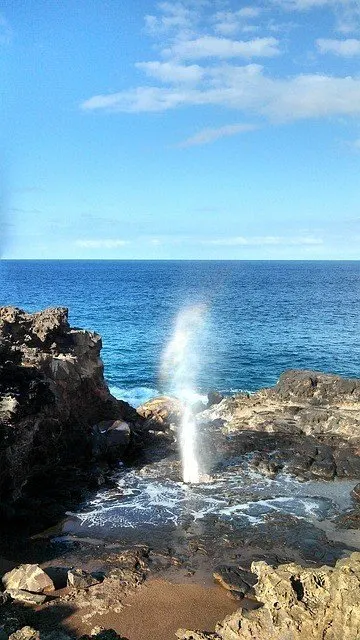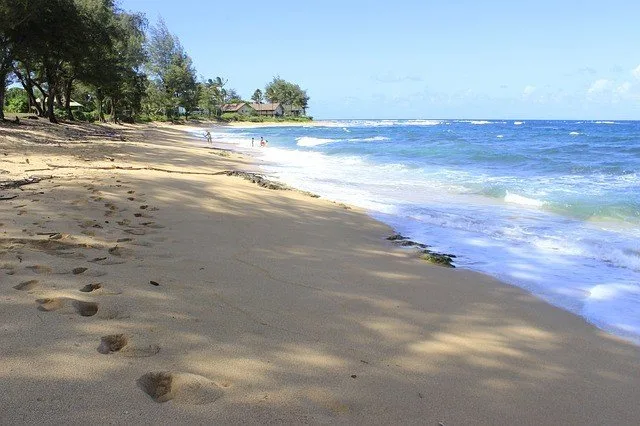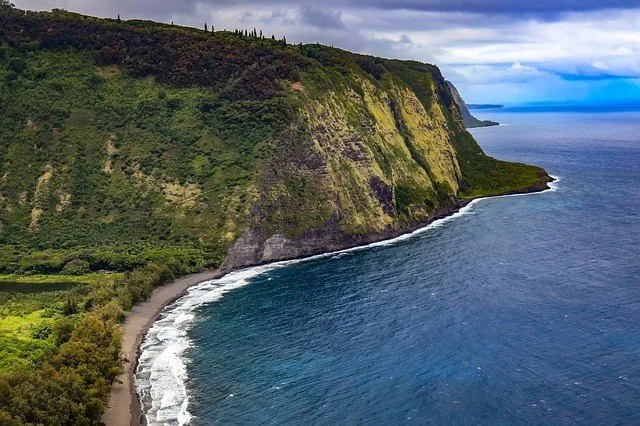The Hawaiian islands receive around 10 million tourists every year and for good reason. They are one of the most varied and beautiful places on the planet where you can find amazing beaches, black and green sand, volcanoes, waterfalls, great snorkeling and more.
Due to its similar size, Maui is usually compared with Kauai when deciding which island to go. However, the Big Island also offers a unique experience and a good contrast with Maui so here we will have a look at some things to consider to decide on your next dream holiday.
Location and Accessibility
Hawaii is an American state located in Oceania around 2,500 miles west of Los Angeles. Due to its central location in the Pacific Ocean, Hawaii has been influenced not only by local aboriginal but also North American and Asian cultures.
Out of the eight main islands, Maui is the second largest and third most populated. American Airlines, Swiss Air, Hawaiian Airlines, Alaska Airlines among other airlines have direct flights that connect Los Angeles with Maui for less than $400. If you’re flying from New York, however, a ticket starts at $450 with long layovers but a shorter 12-hour flight with one stop will cost nearly $550.

Flights to Maui from different major European cities, moreover, can be found for around $1000.
With 4,028 square miles the Big Island, aka simply Hawaii, is the biggest and easternmost island of the archipelago. The Big Island is known for its beautiful nature and for being the only one to host an active volcano, so for many it’s considered the most impressive and unique of all the Hawaiian Islands.
The Big Island has two main airports: Kona and Hilo. Kona on the west side receives twice as many passengers as Hilo on the east side and flights tend to be slightly cheaper.
A ticket to Kona from New York with a stop in Los Angeles or San Francisco costs around $550 and takes 12 hours, while a flight to Hilo will set you back $700. From the west coast there are direct flights to Kona for $350 and to Hilo for $500.
Flights from Europe are both longer and more expensive. A ticket from a major European city to the Big Island costs around $1000 and takes more than 20 hours with stops in San Francisco or Los Angeles.
Maui vs The Big Island: When to go
Maui receives most of its visitors between the months of June and August, December and March. During this period, not only is the island very busy but flights and accommodation are more expensive. Considering that November to March is the rainy season, the ideal months to visit Maui are April, May, September, and early October.

Similarly, the busiest months in the Big Island are from December to March, and June to August. Airfare and hotel rates are at their highest, so if possible it’s better to avoid this period. Crowd and price-wise, the best months to visit the Big Island are between September and November, April and May.
It’s worth mentioning that the number of visitors increases considerably during the Merrie Monarch festival which begins on Easter Sunday, and the Ironman competition which usually takes place in October, so it’s advisable to avoid them when visiting the Big Island if possible.
Maui vs The Big Island: Things to do
Maui is one of Hawaii’s most visited islands for good reason. It offers great snorkeling spots, black sand beaches on the west side, luxury resorts and famous sunsets. For travelers who want a more active vacation, Maui is also home to Haleakala, the largest dormant volcano in the world, and the famous Road to Hana, a great 64-mile drive on the east side of the island that connects Kahului with Hana and takes you through some of the most beautiful places in the island.
With its famous beachfront hotels and restaurants Maui is also a top choice for those who like to have a wide variety of shopping areas and dining options.
The Big Island is perfect for those who like the outdoors and it has some unique places that you won’t find anywhere else. The main attraction is the Hawaii Volcano National Park on the east side which is home to two active volcanoes: Kilauea, one of the most active volcanoes in the world, and Mauna Loa.
Other great places to visit are the Waipio Valley, Papakōlea beach with its green sand, and the beautiful beaches in Kona. On the Big Island you can also tour Kona coffee plantations, famous for being one of the best gourmet coffees in the world.
Maui vs The Big Island: Accommodations
Both Big Island and Maui offer options for every type of traveller, although the latter is more developed for tourists and offers a wider variety in terms of condos and resorts.

The majority of hotels in Maui are located in the south or west side of the island and even though the prices change with the seasons a bed in a hostel dorm will cost you nearly $50 per night, a nice 3-star hotel between $200 and $300 and an exclusive suite with ocean views will set you back $700.
The Big Island is the third most visited in Hawaii and offers accommodation for all budgets. It tends to be cheaper than Maui and it has two very different sides: Kona (west side) and Hilo (east side).
In Kona there are many resorts and hotels with prices usually a bit higher than in Hilo. Whether you stay on the Kohala Coast or in Kailua-Kona town, you’ll find plenty of rooms for $100 per night to condominiums for more than $800 per night.
Even though in Hilo there isn’t such a wide variety of options as in Kona, it also offers different types of accommodation. Here you can find a simple double room for $60, beachfront hotels in Hilo Bay with rooms for around $200 or houses in exclusive locations for $500 per night.
When choosing where to stay in Big Island, keep in mind its size. If you want to see both sides, you’ll need at least a week, although you’ll enjoy it much more if you can stay two to three weeks.
The Food
Hawaiian food is a reflection of the islands’ cultural and ethnic diversity. In both islands there are all types of restaurants although it’s true that in Maui it’s easier to find more variety while in Big Island there are more dining options on the west side.
On both islands you’ll be able to try delicious traditional and international food. Some of the things you definitely must try are haupia (a traditional coconut-milk based dessert), poi (a paste made from taro root), huli huli chicken (barbecued chicken over a grill with sauce) or laulau (pork wrapped in taro leaves and cooked hot hours).
If you want to sample more local flavours, Kona coffee and macadamia are two of the most famous crops on the Big Island. Additionally, there’s chocolate made with locally-grown cacao and some local microbreweries that sell their beers in bars and supermarkets around the island.
In Maui, a meal for two people in a good restaurant costs around $50 and between $80 and $100 if you want something more upscale. In the Big Island on the other hand, food tends to be a bit cheaper and there are local places where you can enjoy a good meal for two for $35 (especially on the east side).
Maui vs The Big Island: TheCost
It’s true that Hawaii isn’t a cheap destination. However, this doesn’t mean that you have to spend a fortune to visit the islands.
Even though the flights to Maui are usually cheaper, in terms of accommodation, shopping and eating it tends to be more expensive than Big Island. However, there are plenty of local restaurants and shops that are more affordable and offer great value for money.
The Big Island, on the other hand, is one of the cheapest Hawaiian islands in terms. The Kona side is more touristy and has cheap (for Hawaiian standards) beach resorts and hotels, while near Hilo you can find several small local inns which makes them a great option to visit the Volcanoes National Park.
Overall, including accommodation, food and activities, you can expect to spend at least $100 per person per day in the Big Island and between $150 and $250 in Maui.
Get around
The best way to move around Maui and the Big Island is to rent a car. Even though there are taxis, shuttles and public transportation, if you really want to get the most out of your holidays the car is the best option both in terms of freedom and costs.
Did you know?
- With 1.6 million travelers per year, the Big Island is the third most visited island in Hawaii.
- The Big Island has a total surface of 4,028 square miles which means that you could fit all the other Hawaiian island combined in its territory.
- Maui has been awarded as one of the 25 best islands in the world and as the best island in the US for many years by the readers of Condé Nast Traveler.
Maui or The Big Island: The Verdict
When choosing between Maui and the Big Island you can’t go wrong. Both islands are beautiful and offer different experiences. Due to its smaller size, Maui’s more accessible and easier to explore making it perfect for those who want to spend time on the beach and also be active snorkeling and hiking. There are condos, hotels and resorts for all budgets as well as many restaurants, shopping areas and great outdoor activities such as the Haleakala volcano, the famous Papakōlea green sand beach and the Road to Hana that will keep you busy for several days.

The Big Island offers sights that are hard to find anywhere else. It’s an excellent option for travelers who like the outdoors, hiking and want an adventurous vacation. Keep in mind that it’s called the big island for a reason and you’ll need to move around and explore to make the most of it. Aim to spend at least two weeks here if you really want to enjoy it without rushing.
He is an expert travel advisor and enthusiast. He has traveled extensively in the USA, Central America, South America, and Europe. He has visited every Sandals Resort and is one of a select few Diamond Elite members of the Sandals Chairman’s Royal Club.
Dan graduated from Johnson & Wales University with an associate degree in Culinary Arts. Later he graduated from the University of Utah with a bachelor’s degree in International Studies with a focus on people and culture.

